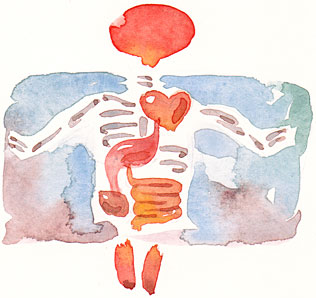Science Overview
This unit includes
science projects and demonstrations, nature study activities, and anatomy for
preschoolers. Any one of these three areas could be units in themselves. Please
consider these lesson plans as samples rather than complete presentations
Science: The projects and demonstrations we selected are safe, simple, and they
usually work. Many other ideas can be found in the books listed in the
bibliography. Consider the language skills, concepts, and degree of participation
of children when developing additional projects
Nature Study: We have organized entire units around plants, animals, water,
ecology, ocean life, bugs, birds, and beasties. To include even a
representative sample would require an entire volume. Reluctantly, we also
decided not to include on-going projects such as gardening and caring for the
terrarium, aquarium, and resident birds, lizards, and mammals. Instead, we have
tried to present some examples of lesson plans in which different content could
be substituted within the same format. Most lesson plans can and should be
extended over several days and simplified by reducing the discriminations,
concepts, and/or activities involved.
Suggestions: Ants and spiders are ideal for study because they are ubiquitous,
safe, and free. Bees are fascinating but must be observed warily. The
bibliography lists several books with superb illustrations
Try some dramatic improvisations using simple costumes. Kids especially enjoy
wearing headbands with pipe cleaner antennae and acting out life in an anthill
or beehive. Ocean life is also easy to stage. A clear plastic umbrella with
ribbons taped to the tips of the ribs makes a fine jellyfish costume. A big
cardboard cone can be a barnacle. If you can persuade your most active kids to
be a barnacle, a trap door spider, or a hibernating bear in a cave, imagine how
placid your project could be! 
Anatomy: One day at school a boy came running up to the teacher, complaining of
an aching stomach. He wouldn’t respond to our assurance that he would feel fine
but announced that what was needed to cure his problem was a bandage taped over
his hurt. And sure enough, the pain quickly ceased to bother him when he was
bandaged!
The wonders of modern medicine are often difficult to explain. However, the
interest in such home remedies reflect a common concern for physical well-being
and a sense of awe and amazement over the workings of the body. Even a cut
finger or bruised knee can become an intriguing lesson on how the body works to
heal and mend itself.
What could be more satisfying for a preschooler than to learn about what goes
on inside them and enables them to run, jump, peddle a tricycle, paint a
picture, eat a snack, talk to a friend, or hear a train whistle. Almost every
child expresses a curious interest over the loss of a tooth, an X-ray of a leg,
or a lump on the head.
Anatomy is not a typical unit in most preschool programs. However, our kids
found these projects to be fascinating. Again, please consider these lesson plans
as examples of ways to describe body functions. Any one of these topics could
be extended with other similar projects.
Plastic models of individual organs, the Visible Man and Woman, and commercial
and teacher-made transparencies are very useful visual aids.
Health, nutrition, safety, and other related topics can be developed along with
the anatomy projects.
|